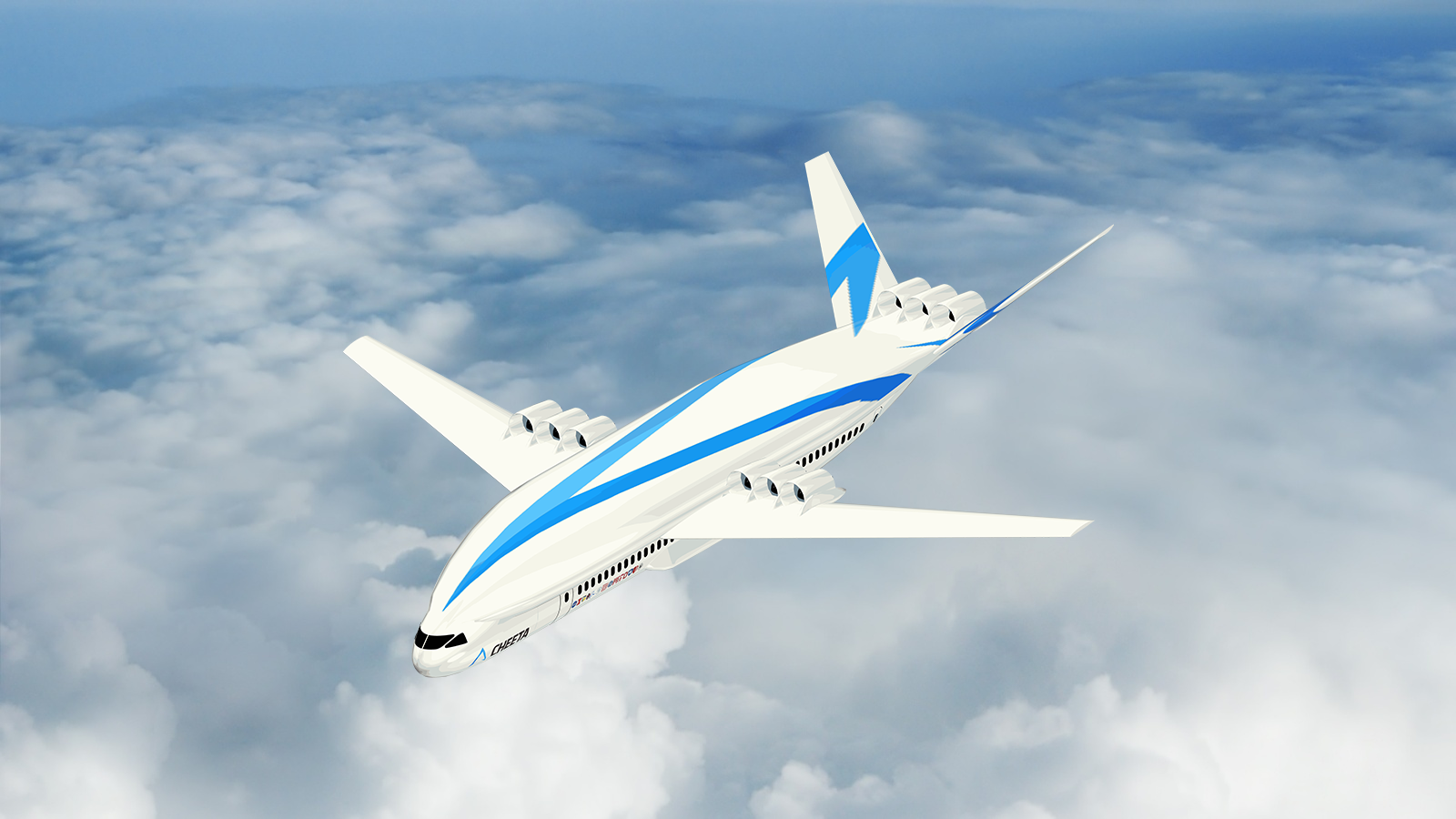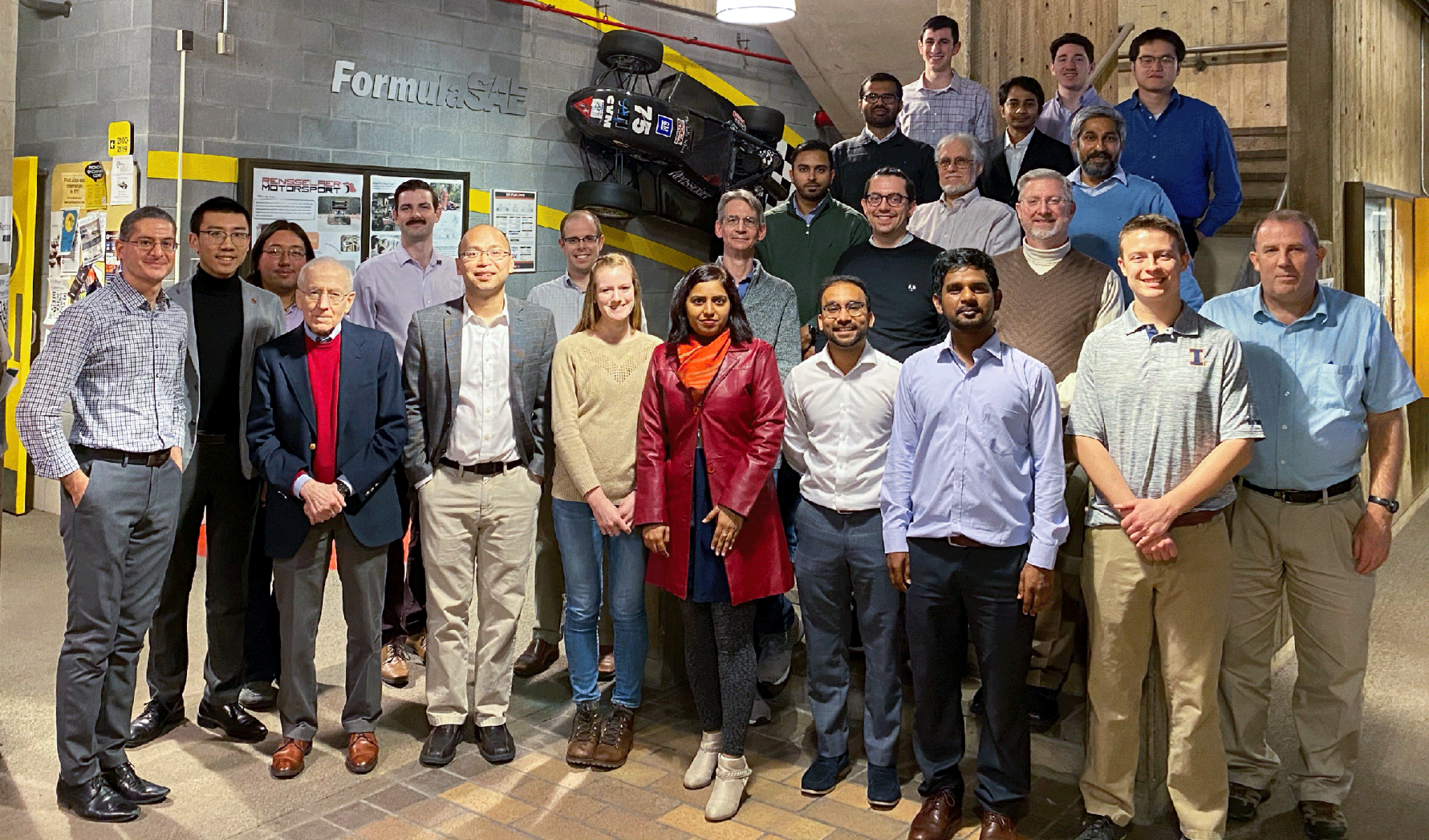
With support from NASA, university researchers have made advances towards developing advanced fuel cells and electricity-conducting technology to generate power for fully electric aircraft of the future.
Hydrogen fuel cells, a clean energy source whose only emission is water, have yet to achieve use in powering large aircraft due to engineering challenges associated with weight, temperature, and electrical loads.
Now, however, new research demonstrates there may be a way forward.
CHEETA, or the Center for High-Efficiency Electrical Technologies for Aircraft, is working on developing new technology to incorporate fuel cells into aviation. This sustainable technology has the potential to make aviation more environmentally friendly by cutting carbon emissions out of the picture.
Formed as part of NASA’s University Leadership Initiative (ULI), which seeks to involve university faculty and students in achieving NASA’s aeronautical research goals, CHEETA is a consortium of nine universities and two industry partners, led by the University of Illinois Urbana-Champaign (UIUC).
Not only is CHEETA working on creating fully electric aircraft powered by fuel cells – it also is involving graduate, undergraduate, and even high school students in the research. Inclusion and involvement are key elements of NASA’s ULI activity.
“We’re investigating different characteristics of how fuel cells operate as powerplants for future electric aircraft,” said Phillip Ansell, CHEETA’s director and assistant professor at UIUC. “It’s been amazing to have students involved in this cutting-edge work, and we’ve all been learning together.”
CHEETA already has inspired proposals of some new research activities – two UIUC graduate students have completed master’s degrees under its first phase and are working on their doctorates.
“The students are just so enamored with our work, which has been really cool to see,” Ansell said.

A Different Kind of Power Source
Fuel cells generate electricity by combining oxygen from the air with hydrogen, with its only emission being water. That’s right – just water.
“Hydrogen is a great energy carrier because there isn’t any carbon involved. These fuel cells can be configured to produce zero emissions. This is a cornerstone of what we want to accomplish with CHEETA,” Ansell said.
However, there are challenges involved in applying this technology to aviation.
A big one is that to remain an effective power source, hydrogen must be cooled down to its liquid state – a rather brisk minus 423 degrees Fahrenheit (minus 253 degrees Celsius).
Storing this supercold, or cryogenic, liquid requires tanks that are heavier than those used to hold regular jet fuel, which has made it difficult for fuel cells from achieving widespread use in aviation.
Another challenge is fuel cells must be able to generate enough electricity to power a large airplane, and then efficiently carry, or conduct, the electricity to the aircraft’s propulsion and power systems.
In the past, powering an airliner the size of a Boeing 737, which must generate more than 20 megawatts of power to operate, was considered too challenging, but Ansell and his colleagues believe recent technological advancements have changed that.
“We looked at the numbers and realized the state of the art is not far from an approach that works,” Ansell said. “There is a lot of potential.”
Electricity in the Air
CHEETA is taking the approach of designing a unique prototype airliner built around the use of fuel cells and the challenges associated with their use. Researchers also are developing brand new technologies to further improve their prototype airliner.
“Since fuel cells are inherently different as a power source, the standard rules of aircraft design change drastically,” Ansell said. “We are looking to write the book on how you make this system work for an airplane.”
And progress has been made. For instance, CHEETA partnered with GE Research to design a new type of lightweight hydrogen tank for use on an airliner.
“We came up with a new lightweight tank designed to have the long life needed for airplanes that can also identify leaks and other issues. It could be turned into a practical product that enables hydrogen use in the future,” Ansell said.
CHEETA also has worked on designs for new technology to handle massive electrical loads as well as manage the issues of heat and thermal management.
“In collaboration with Boeing, we did some tests to see how fuel cells adjust when changing the power demand on them. We also did tests to see how changes in the way incoming air to the fuel cell is pressurized to improve net power production at high altitudes,” Ansell said.
To help them achieve their goals further, CHEETA is in conversation with NASA researchers at the agency’s field centers where aeronautics work takes place.
For example, the consortium has discussed aircraft configurations and the integration of propulsion components with experts at NASA’s Langley Research Center in Virginia, as well as cryogenics and fuel with NASA’s Glenn Research Center in Cleveland.
“We’re very proud of the receptivity to our work at these higher levels. It’s been productive to exchange information and inputs on our shared goal of electrified aviation,” Ansell said.
Having completed its first phase, which began in 2019, CHEETA is being extended for two additional years of study. Researchers plan to develop and demonstrate prototype technologies of electrical power systems, hydrogen storage systems, and a scaled aircraft concept. They are hopeful that positive results will lead to larger flight tests down the road.
For the past five years, the ULI activity has invited university students and faculty to help solve real-world technical challenges in areas such as Advanced Air Mobility, Air Traffic Management, and more as part of NASA’s University Innovation project.
NASA is currently in the process of selecting the sixth round of ULI awardees.

































